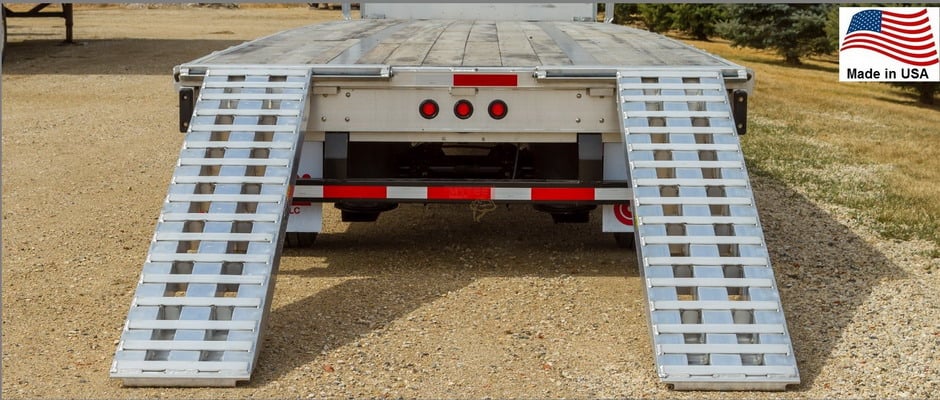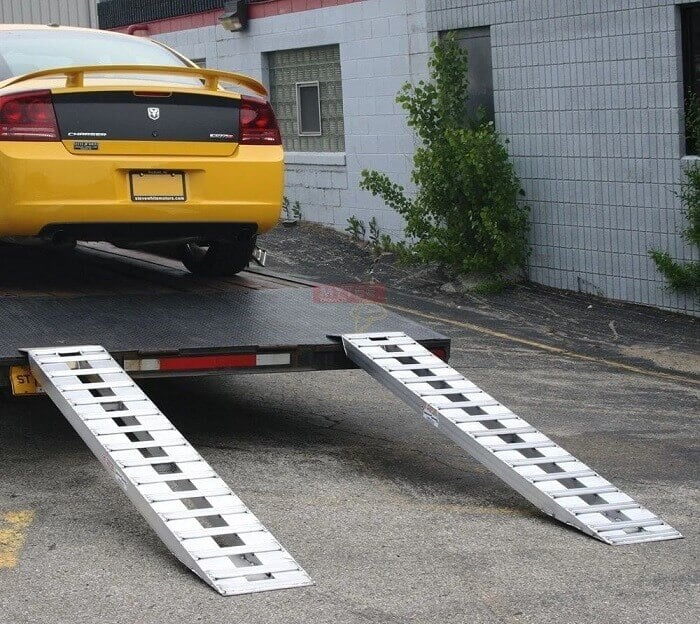We take trailer loading ramps for granted. In other words, we just assume that a good set of ramps is going to do the job without issue. We usually don’t give any thought to how they actually work, or how they make our lives easier for that matter. If we did, we would be delving into all sorts of things related to physics.
As human beings, we are capable of using tools to do all sorts of work. Trailer loading ramps are just one example. When you understand the physics behind how these ramps work, you come to appreciate how much they enable us to do. There are plenty of loads truckers could not carry if it were not for the work done by loading ramps.

The trailer loading ramps we sell are intended for both straight flatbed trailers and those with multiple deck levels. They affix to the back of the trailer using clips to hold them in place. On the other end, wedges make the transition from ground to ramp a smooth one, allowing operators to easily drive or push cargo up onto the trailer.
The Key: Force and Distance
We will not get into all the physics of using trailer loading ramps, but we do want to cover some of the basics. The first thing to talk about is how ramps make it possible to load extremely heavy cargo on the back of a flatbed. Imagine a trailer carrying a heavy piece of construction equipment.
Without loading ramps, that piece of equipment would have to be lifted onto the trailer using a crane. Why? Because it takes a tremendous amount of force to overcome gravity when lifting an object by pulling it from above. All that dead weight requires a heavy-duty crane to get it off the ground. Furthermore, greater downward force is exerted on the object the higher it goes.
Using loading ramps still require some amount of force to get the piece of equipment onto the trailer. But rather than pulling it straight up, the operator is moving the equipment across an inclined distance. Spreading gravitational force across a surface plane at distance allows the operator to more easily overcome that force at any given point during travel. The result is less energy required to move the same object.
Other Physical Forces at Play
While the force and distance equation is the key equation for trailer loading ramps, there are other physical forces in play. For starters, you have both the potential and kinetic energy stored in the piece of equipment being loaded. That energy affects how the cargo is moved.
Kinetic energy is energy in motion. It puts increased stress on the ramps the further up the piece of equipment goes. Combined with gravitational energy, kinetic energy also puts stress on the rear of the trailer. That’s why ramps have to be firmly affixed and trailers have to be locked in position.
Potential energy is stored energy. It exists in the piece of equipment even as it is moving up the ramps. If one of the two ramps are unsteady, that potential energy could be transformed into kinetic energy, causing the piece of equipment to tip and fall off the ramp.
Rest assured that engineers work out all the physics before attempting to load a piece of heavy equipment onto a trailer. Operators know the size of the ramps they should use, how to anchor the ramps in place, and how to actually move equipment up those ramps. If it weren’t for physics, none of it would be possible.














